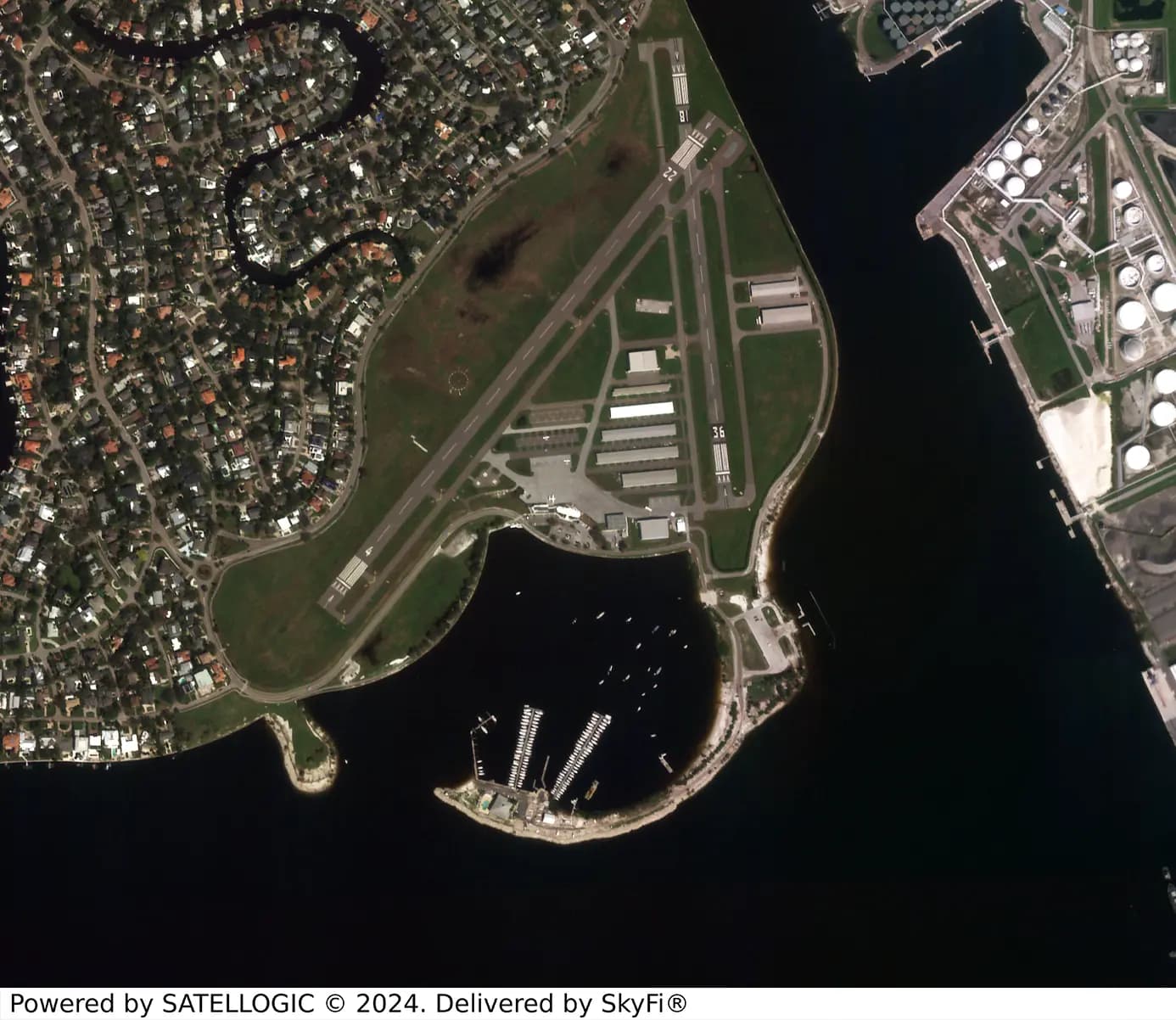
What is Marine Traffic and how is it tracked?
At SkyFi, we recognize the importance of real-time maritime data in an ever-evolving world. From tracking cargo vessels to monitoring environmental impacts, having accurate information is critical. While AIS (Automatic Identification System) data plays a key role in tracking vessels, SkyFi complements this with Earth observation data, providing enhanced insights that serve a variety of industries.
Understanding Marine Traffic and Its Significance
Marine traffic refers to the movement of vessels, including cargo ships, tankers, and fishing boats, across the world's oceans and seas. Ships are the backbone of global trade, transporting goods over vast distances. Monitoring these vessels in real-time is essential for safety, collision prevention, and route optimization.
AIS data helps track marine traffic by providing real-time information on vessel locations and movements. When paired with SkyFi’s Earth observation data, this information becomes even more powerful, allowing for a deeper understanding of maritime activities.
What is AIS Data?
AIS, or Automatic Identification System, is a tracking system that transmits vital information about a ship’s location, speed, and identity to nearby vessels and coastal stations. Here’s how it works:
Static Information (Every 6 Minutes):
Ship identity, IMO number, and size.
Dynamic Information (Based on Movement):
Position, speed, and direction.
Voyage Information (Every 6 Minutes):
Cargo type, destination, and estimated time of arrival (ETA).
AIS data provides critical insights, but integrating it with Earth observation data, such as satellite imagery, allows for even greater context and analysis, especially in remote or difficult-to-reach areas.
How AIS Data Complements Earth Observation Data
AIS offers real-time tracking of vessel movements, but its range is limited by coastal stations and certain equipment requirements. SkyFi’s Earth observation data can bridge these gaps by providing high-resolution imagery that complements AIS data. This is particularly useful for:
Environmental Monitoring:
Earth observation can help assess the environmental impact of maritime activities, such as pollution or illegal fishing.
Illegal Activity Detection:
Satellites provide visual evidence in areas where AIS data might be lacking, such as vessels that have turned off their AIS to avoid detection.
Remote Area Tracking:
SkyFi’s imagery can track vessel movements in parts of the ocean where AIS coverage is limited.
AIS Applications Supported by Earth Observation Data
Collision Avoidance:
AIS helps ships identify each other, while satellite imagery provides additional context, such as weather conditions or obstacles.
Marine Protection:
Combining AIS and satellite data helps monitor protected areas and prevent illegal activities like overfishing.
Maritime Security:
Satellites offer visual insights in conjunction with AIS, allowing for better tracking of vessels in sensitive or remote regions.
Search and Rescue:
In emergencies, satellite data can enhance the last known positions provided by AIS.
Fleet and Cargo Tracking:
While AIS monitors fleet movements, Earth observation data provides added detail, especially in areas with limited AIS coverage.
SkyFi's Earth Observation Data: A Powerful Addition
SkyFi offers high-resolution satellite imagery that complements existing AIS data, providing a more comprehensive view of maritime traffic. With our platform, users can access detailed imagery to support route planning, security measures, environmental protection, and more. This combination of technologies enhances decision-making and operational efficiency across industries.
Challenges in Maritime Tracking
AIS is a highly effective tool, but it has limitations. Some vessels may turn off their AIS to avoid detection, and not all ships are required to use it. Additionally, AIS relies on clear communication lines, which can be disrupted. SkyFi’s Earth observation data helps mitigate these challenges by offering consistent visual insights even when AIS data is unavailable or incomplete.
Summary: The Future of Maritime Tracking
AIS data is essential for tracking marine traffic, providing real-time information on vessel locations, speeds, and routes. However, the integration of Earth observation data, such as the high-resolution imagery offered by SkyFi, adds another layer of valuable insight. Together, these tools create a more comprehensive solution for improving maritime safety, managing environmental resources, and enhancing operational efficiency.
FAQs About Marine Traffic and AIS
Why is Marine Traffic Important?
Marine traffic monitoring is vital for managing global shipping routes and protecting marine environments. It helps prevent collisions and ensures efficient maritime operations.
How Does AIS Work?
AIS broadcasts a ship’s location and status via VHF radio frequencies, which are picked up by coastal stations, other vessels, and satellites.
How Can SkyFi Help?
SkyFi complements AIS data by providing satellite imagery, offering more detailed insights and enhanced monitoring in areas with limited AIS coverage.